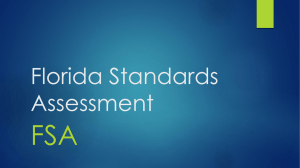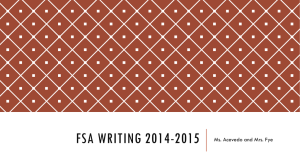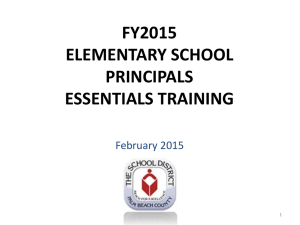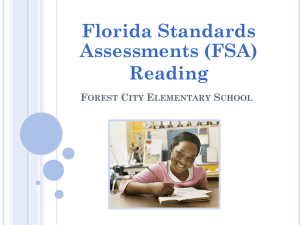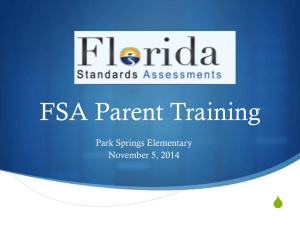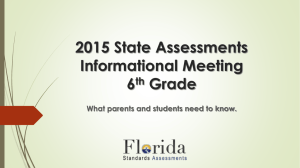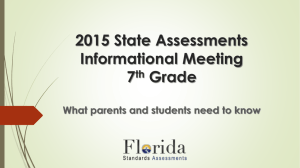(full slides) - Forestry South Africa
advertisement
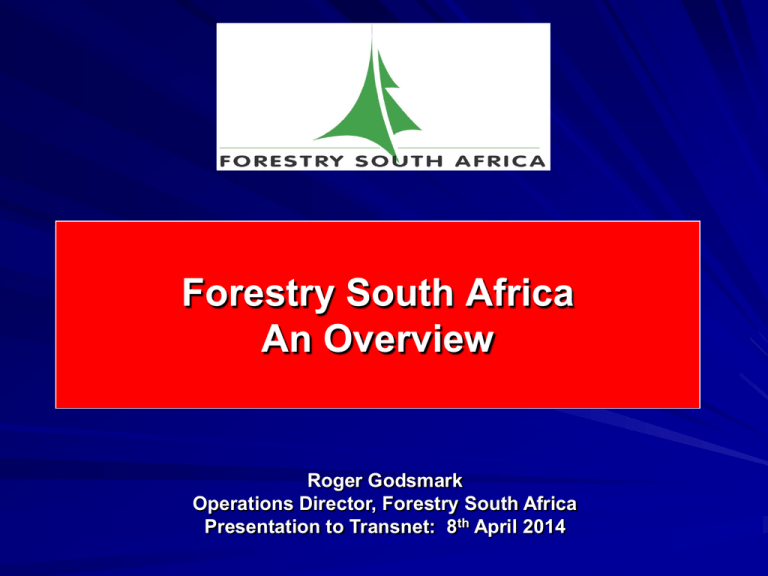
Forestry South Africa An Overview Roger Godsmark Operations Director, Forestry South Africa Presentation to Transnet: 8th April 2014 FSA Formed in 2002 SA Timber Growers Assoc. Forest Owners Assoc. (commercial farmers) (corporate growers) Why? There was a political imperative to create a single, all inclusive organisation that represented all private timber growers FSA Constitution 1 Main Features Provides for Different Membership Categories Ordinary Associate Honorary (timber growers) (non-timber growers) Structured into three “Grower Groups” Large Medium Small (corporate) (commercial farmers) (small-scale growers) General Committee feeds into the Executive Committee which is top decision making structure FSA Constitution 2 Main Features Executive Committee decisions reached by consensus No one member or group of members can dominate 11 person Executive Committee Large Medium Small (5 members) (3 members) (3 members) Chairmanship is rotated annually between the 3 Groups Association is apolitical In Essence FSA is…….. A voluntary Association of timber growers That is registered as a “non-profit organisation” Whose Overriding Role is …….. To represent the best interests of its members; and The interests of the South African Forestry Industry Who Are FSA’s Members? MEMBER DESCRIPTION (1): Corporate Companies Private Ex-SAFCOL SAFCOL (KLF) SUB-TOTAL (2): Commercial Enterprises Timber Farmers Timber Co-ops SUB-TOTAL (3): Small-Scale Growers GRAND TOTAL * TOTAL NUMBER HECTARES 9 4 1 612 600 143 300 127 700 14 883 600 1 300 4 232 780 23 600 1 304 256 379 20 000 45 000 21 318 1 161 380* PLANTED AREA = 1 273 357: FSA MEMBERS 91.2% Why is FSA’s Membership Base so Strong? Due to its large and representative membership base, FSA is seen as “the” body which represents the Industry It gives members a powerful collective voice Members benefit from not only from the lobbying actions of FSA itself but also from the output of Industry based interventions (e.g. research & forest protection) Deferring or stopping potential costs before they occur Reducing potential costs through forest protection interventions Increasing productivity through skills training & research Reducing Industry costs through leveraging additional funding The Bottom Line ……… the cost of membership are far outweighed by the benefits derived FSA Operating Structure FSA Executive Committee FSA General Committee Executive Director (Michael Peter) JOHANNESBURG PIETERMARITZBURG Head Office Regional Office Finances Admin Caretaker (Muriel Farquharson) (Precious Singo) (Bethuel Maubane) Ops Director Bus Dev. Director Regional Facilitator Office Manager Working Committees (Roger Godsmark) (Norman Dlamini) (Nathi Ndlela) (Judy Dowsett) Large Growers Group Water & Environment Transport Land Human Resources Research Bio-energy Medium Growers Group Small Growers Group KZN (8) Mpum. (1) Limpopo (2) FSA’s Main Activities FSA fulfils its mandate by doing 4 main things Acts as a Lobby Group Government NGO’s Other Bodies (National, Provincial & Local) (e.g. Forest Stewardship Council) (e.g. SETA, Funding, Research, Universities etc.) Acts as collector & distributor of funding Acts as the keeper, analyser & distributor of information Co-ordinates, organises and capacitates small-scale growers Lobbying is becoming an ever increasing activity FSA’s interventions generally high level & at national level How Do We Do What We Do? In order to do what we do, we need 2 essential things……. Financial Resources: Membership contributions (levy of R1.73 per ton timber sold) Donations / sponsorships Partnership funding (e.g. DAFF, DST) Interest Human Resources: Permanent staff (7) Outsourced staff (consultant) Partnerships (e.g. Kwanalu) Member’s assistance Working Committee structures FSA & Industry Expenditure Budget 2014 Research HR Forest Prot. Other * Env & Water FSA 18.9% R5.7m 4.5% 44.2% 0.6% R13.4m 3.7% R8.6m 28.1% Total – R30 401 000 * Includes R500 000 income recovery Total FSA Income Budget 2014 Levy* Donations Sundry Income 13.7% R4.2m 1.6% R25.8m 84.7% Total – R30 442 000 * Based on timber sales of 14 900 000 tons Main Issues Being Dealt with by FSA Land Reform (legislation & post-settlement support) Forest Protection (Sirex, TPCP, fires etc.) Research (DST SIF funded projects) Labour (legislation and regulations) Afforestation & water issues (licence matters) Environmental issues (certification) Transformation issues (Charter Council) Transport Issues (road, rail and ports) Skills Development issues (FP&M SETA) Small-scale timber grower development (Bus Dev Unit) Main Issues Being Dealt with by FSA’s Transport Committee Rail Revitalisation of Thuth ‘ihlathi Project on PMB Cluster of branch lines Co-operation in designing new timber wagons Road Toll Roads Regulations (ARTO & national road traffic regulations) Diesel rebate Labour carriers Ports Port cargo dues Conclusion Despite FSA’s limited resouces, both human and financial, with the assistance of its members, FSA has established itself as a credible organisation and one that punches way above its weight. Thank You
